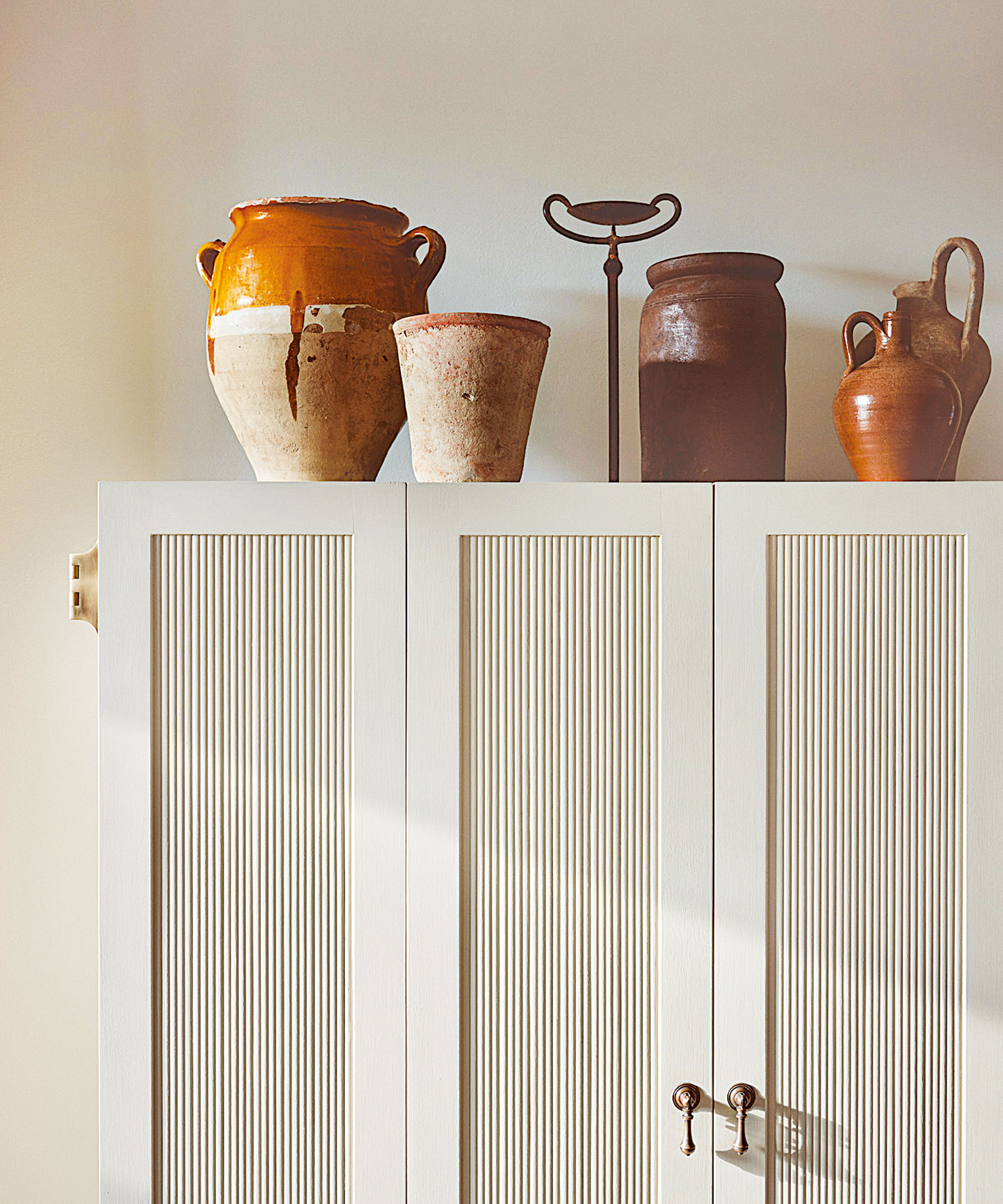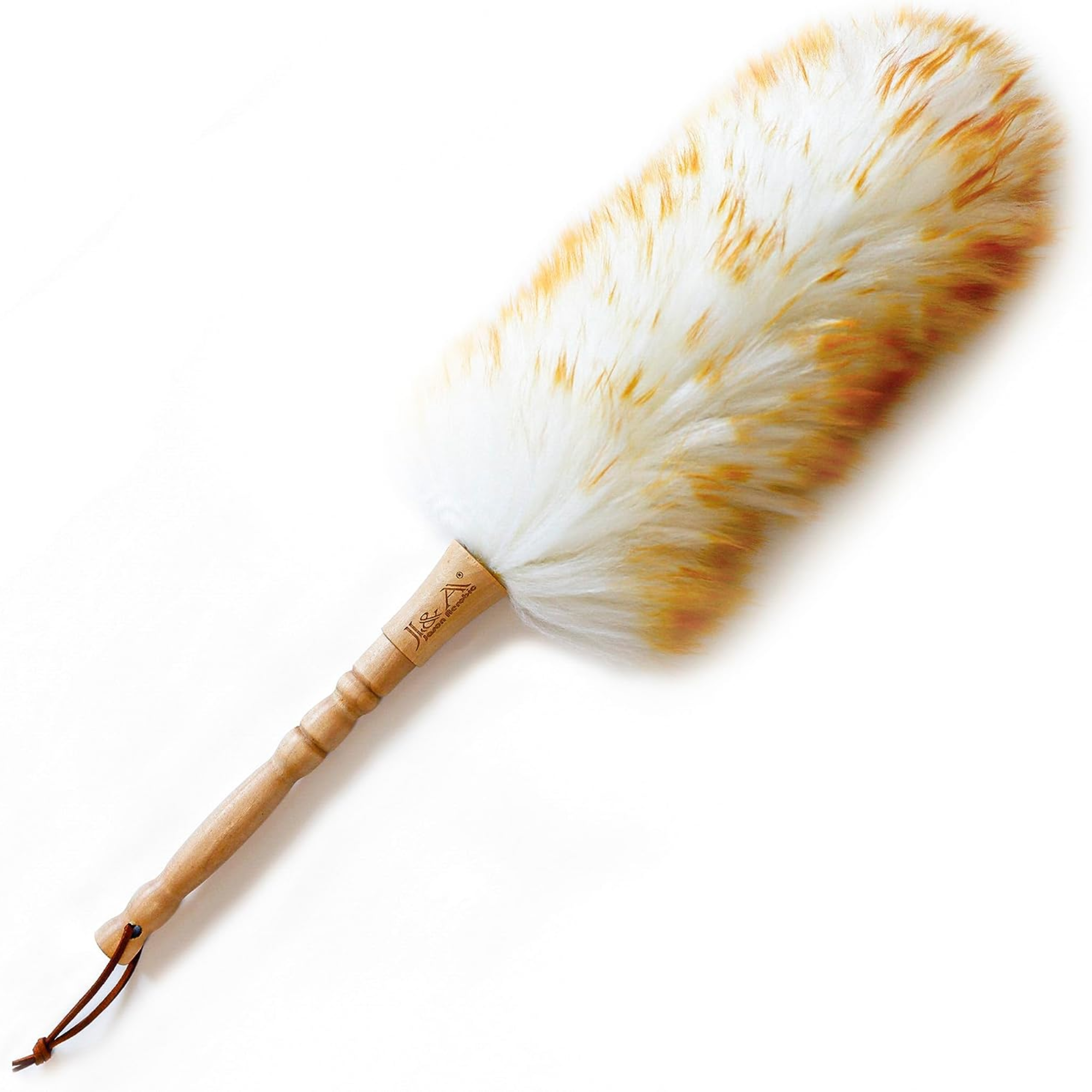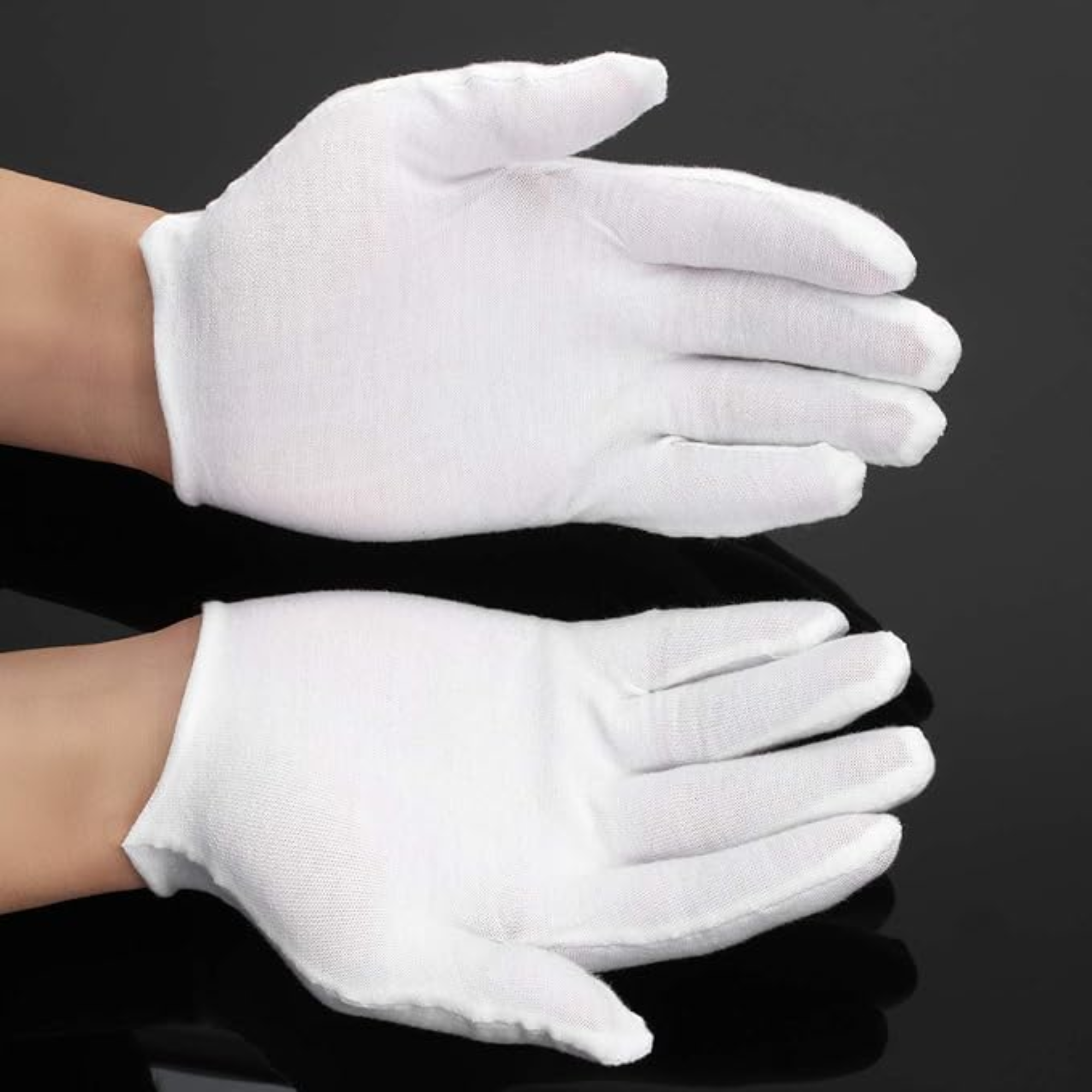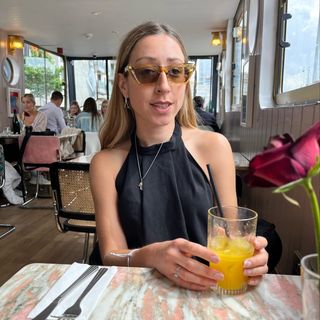How to clean artwork – tips from professional painters and curators
We consulted artists and gallery curators about how to clean artwork and avoid damaging your collection


A home filled with artwork is one with life and character. Amongst other decorative details, a fine print or abstract oil painting is a lovely way to bring interior design trends to life and show a little of your household's personality.
As much as we would be thrilled to enjoy museum and gallery-like conditions at home, our dehumidifiers can only do so much. Whether you are an avid collector or enjoy decorating with vintage art, you might notice that over time, dust gathers, and some works may show a little patina or yellowing.
So, should we be cleaning our art collections? We asked the experts...
How to clean artwork
To keep your finest pieces, perhaps even including the children's scribbles on the kitchen fridge, looking marvelous, should we clean artwork at all?
'Absolutely,' says Varuna Kaur, Director and art curator at Ruup & Form. 'Cleaning artwork is essential for preserving its appearance and prolonging its lifespan. However, it is crucial to handle this task with great care, especially when dealing with valuable or fragile pieces. Wherein doubt, hire professional art cleaners for assistance.'
How to clean canvas paintings

Dust is the main culprit with any piece, particularly if you are one for framing artwork without glazing as you would likely see in a gallery or museum. What is of utmost importance here is that artwork is delicate, and you should employ a professional for anything more than a dusting, especially with items that are of great value.
Tomasz Rut, artist and the owner of Tomasz Rut Fine Art holds a degree in Conservation of Fine Art and has come across ruined works by 'inept home cleaning.'
Design expertise in your inbox – from inspiring decorating ideas and beautiful celebrity homes to practical gardening advice and shopping round-ups.
'If your painting needs to be cleaned, please hire a bona fide specialist - an art conservator,' he warns. 'If you’re not an expert, the most likely result of your cleaning attempts will be damaging the piece you own.' Tomasz notes how some default to using water and home cleaning products that contain detergent. Naturally, this is ill-advised.
'The use of water is very likely to shrink the canvas, which will result in early peeling of the paint layer and the use of a detergent (like soap) will often result in over-cleaning and damaging the paint layer. An art conservator has to do cleaning tests to determine which solvent will work best on your painting. And solvents don’t contain water. If you must clean your painting, use a very soft dusting brush. Never use Windex as it contains ammonia, which may be very destructive to the paint layer.'
When decorating with artwork, keep paintings out of direct sunlight to stop UV damage. Dust, however, is inevitable, particularly if you have pets. For this a very soft dusting – provided the paint layer is intact and not flaking – is what Tomasz and other artists advise, if cleaning them at all...
'I don’t clean my paintings, even if they’re slightly dirty, which can be considered a natural patina,' continues Tomasz. 'If I did have to clean my own piece, I‘d have to run cleaning tests in small, inconspicuous areas to make sure which solvent would work best. But since I don’t do any art conservation anymore and don’t have all the solvents required, I‘d take it to an art conservator.'

Tomasz Rut is a Las Vegas-based artist, who is renowned around the world for his epic, classically inspired figurative style inducted into the Vatican Collection. Tomasz holds a degree in the Conservation of Fine Art and was named one of the most collectible contemporary artists by Robb Report.
The artist continues to expand his repertoire offering a wide variety of new media which include original oils on canvas, watercolors, pastel, sepia and charcoal drawings as well as limited and open edition prints on metal, acrylic, canvas and paper.
How to clean acrylic paintings and mixed media

When it comes to acrylic works in particular, emerging artist and blogger, Masha Eretnova shares the reason why you might be noticing dust on your gallery wall.
'I'm working with acrylic paint and mixed media and these materials require regular maintenance to protect them since dry acrylic paint forms a sort of plastic film on canvas and such film attracts a lot of dust,' says Masha.
Just as Tomaszo recommends, a very light dusting is the best and most cautious approach. Still, Masha has discovered another gentle method to clean an acrylic painting on canvas without risking water damage: 'This trick is to use a simple lint roll that many households have,' says Masha. 'It picks up all the dust and little hairs from the painting. It works especially well for art owners with pets.'
Do test a spot in an inconspicuous area of your painting beforehand, on the side, for example, to ensure the paint does not come off. If in doubt, perhaps reserve this method for paintings you are less precious about. There are lots of lint rollers available on Amazon that might lend a hand.
'If you don't have a lint roller or the painting is textured (and the roll won't be able to freely move across the surface), the alternative for cleaning is a good old feather duster or a large soft sable brush. It is very gentle and will not damage the canvas in any way.'
Both the lint roller and duster method mean you will not need to touch the painting. 'If you have to touch it (because it is large or hard to access), use fabric gloves. If we want to make sure our painting lasts for decades we can't use any cleaning products, even water-based, for regular maintenance cleaning.'

Masha Eretnova is an abstract artist, art niche blog owner, and educator. Member of Professional Artist Association.
How to clean sculptures and ceramics

All modern interior design styles can be complemented with an iconic sculpture or other ceramic piece. Caring for vintage ceramics and decorative pots should be approached with diligence again, and for anything truly precious that was commissioned, check in with the artist.
'With different materials, finishes, and locations, sculptures present their own challenges when cleaning artwork,' says sculptor Kevin Caron, who offers aftercare to buyers. 'When creating commission agreements, I include the required care for the piece.'
If you are one for decorating with vases, anything shop-bought should come with some simple instructions to follow. Kevin shares more detail for some of his metal work sculptures: 'For oxidized (rust), powder coated and painted finishes, plain water, mild dish soap, and a soft rag usually do the job, while I recommend a feather duster for my large-format 3D-printed sculpture. While it can be hard when you've just fallen in love, after-purchase care is something patrons should consider when buying art.'

Known for his swooping, towering, and often confounding creations, artist Kevin Caron's inspired sculpture can be seen in public and private places from U.S. coast to coast, in Europe, Asia, Australia, the Bahamas and other countries as well as online. The 2018 Phoenix Mayor's Visual Artist of the Year, Kevin and his artwork were featured in a national ABC TV 20/20 special. His more than 60 commissions include his monumental sculpture Top Knot for the Surprise, Arizona, Civic Center Plaza. His monumental sculpture Wherever You Go, There You Are was purchased and now stands in front of Whitaker Museum for Science and the Arts in Harrisburg, Pennsylvania. In addition to his metal works, Caron is a pioneer in creating 3D-printed sculptures as large as 5-1/2 feet tall. Caron's YouTube channel features more than 700 videos that have been viewed more than 28 million times.



FAQs
How can I protect artwork at home?
UV protection for art is crucial. Do not display art in direct sunlight and if you are concerned, you can invest in a protective layer, including UV glazing. 'Proper maintenance includes regular dusting, controlled temperature and humidity in the room where the work is, and avoiding direct sunlight,' adds Masha.
If you and/or the children practice with acrylic color, pastels, and the like frequently, consider the materials you use and add a final layer of protection before displaying pieces as part of your wall decor. 'The first step would be to make sure all the supplies we use to create the artwork are archival - meaning they are meant to last and meet "gallery" standards - and the paint we are using has excellent or very good lightfastness - the rate that shows how fade-resistant and long-lasting the said paint is. The excellent lightfastness label tells us that with proper maintenance, the work will last up to 100 years and even more,' says Masha.
'The second most important thing is varnishing. Varnish creates a solid transparent protective barrier.' It will also make maintenance easier. Note, if you have bought a painting, this should already be varnished.
'Applying a varnish or a fixative is crucial if it is a mixed media work, with pastels or charcoal, or any other mediums that are not as durable as acrylics/oils and can be smudged by touch.' So consider a fixative and keep a soft feather duster for a light touch of cleaning when essential. 'For my works, I use liquid varnish if the work is flat and a spray varnish-fixative if it is a textured piece, work on paper, or mixed media.'
Masha shares a favorite product for acrylics, noting this is likely different for oil painting: 'I use Winsor Newton varnishes (liquid and spray).' You can find this and others on Amazon, choosing the finish you prefer. 'The varnish contains UV protection, but there is also an option like UV-protected plastic sheets - they are lighter than glass and reflect UV.'
Should you remove paintings from their frames to clean them?
This is not recommended. 'If the piece is varnished and fully framed, without glass, I would not take it out of the frame, but simply regularly dust both the frame and painting. If the frame is wooden, I would avoid moisture,' says Masha.
'But some works are framed with glass, especially works on paper. In that case, we should check if it is possible at all to open it. If so, I would do it and clean the glass during seasonal deep cleaning. The glass should be fully dry before we assemble the framed artwork back together.'
If in doubt, even of your fine feather dusting skills, always consult a specialist and, if you can, ask the maker for their advice.

Camille is the former deputy editor of Real Homes where she covered a broad range of topics, including house tours, small space design, and gardens. She studied English language and Italian at the University of Manchester and during a year abroad studying linguistics and history of art in Bologna, Italy she started documenting her adventures and observations in a blog. Camille is always creating and spends her downtime painting, taking photos, traveling, and writing short stories.